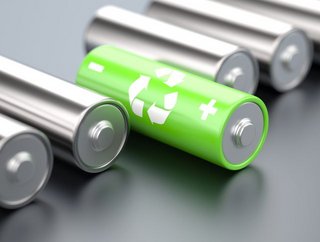From RenTechs to battery power: how the energy industry will be transformed in 2018

The energy markets will be radically re-drawn with the rise of RenTechs
Customers desire green energy and are committed to the global warming challenge. Large enterprise customers are already building or buying their own solar farms to become 100% green, reduce reliance on energy suppliers and even sell surplus to the grid. Due to the rapidly falling price of renewables, the cost of entry to energy markets is plummeting, falling further in 2018. For example, solar costs are predicted to fall again 59% by 2025 (after 85% improvement from 2009 and 2016). Technology firms, like Amazon and Google, large consumers having already built their own generation facilities to meet their needs are waiting on the sidelines to meet consumers’ energy generation and management needs. Established Utilities invest also a lot in renewables development.
Instead of large-scale fossil fuel plants, established tech firms and start-ups alike will start to enter the industry with renewable technologies. Just as FinTechs have disrupted financial services, in 2018 we will see “RenTechs” (Renewable Energy Techs and Companies) will start to pose a threat to energy firms’ survival in NA. The utilities answer can result in an aggressive renewable development plan, as announced this December by EDF with 30GW solar projects in the 10+ coming years in France.
Consumers will break free from traditional utilities firms with self-powering communities
With the falling cost of renewable technologies as well as storage competitiveness improvements, self-energy production has become accessible to a much broader section of consumers, notably in countries with high residential tariffs. Frustrated with the traditional energy market, individual producers will increasingly organize themselves into energy communities during 2018. For example, Sonnen has created a community of solar power owners, where each can buy and sell energy to each other based on their generation and need. In another instance, Nottingham City Council has set up a non-profit supplier using renewable energy to provide residents with the lowest-cost power possible. With increasing numbers of consumers opting for self-production and local power sources, utilities will see a squeeze in their customer base and need to reassess their cost structure. Communities also take the face of “purchasing together” groups.
Musk will prove batteries' potential for energy storage
2018 will be the year that Elon Musk and other innovators prove batteries have the capability to be instrumental in the energy market of the future. With renewable energy production costs plummeting, having the right power storage will be crucial if it is to replace the majority of fossil fuel production long term. This is where batteries come in, becoming immensely valuable as a method to store energy sourced from renewable technologies. Next year, batteries will start to prove their potential. The future will become tilted towards use of batteries to store self-produced power. Costs will continue decreasing, on track to be below $190/kWh by 2020 and projects will show batteries to be critical for providing long-term energy supply from renewables.
Artificial Intelligence and robotics will start to restore consumer faith in utilities
There is no denying utilities have a terrible reputation when it comes to consumers. The industry has a digital customer experience gap of 71%,[1] the largest of all sectors. Customers are fed up with what’s perceived as high prices and bad service, and will be keen to abandon the traditional suppliers in their droves if they can cheaply self-produce. However, in 2018, artificial intelligence technologies such as chat bots or predictions of downtime / boiler breakdown will start to build trust, better service and transparency. Three quarters of firms using AI have already seen a 10% uplift in sales, 73% think AI can increase customer satisfaction scores and 65% believe it could reduce future customer churn. This technology is a vital lifeline for a beleaguered energy industry, and expect to see adoption rates spike as firms try to keep up with market changes.
Utilities transformation programs will accelerate and start to pay-off
The u2es move (Utilities to Energy Services) and profound transformation started in Germany will be adopted by almost all established players, when entrants go directly to the downstream and services business. We will observe in the coming months the mushrooming of e-Solutions type of units, with accurate resources and Digital as a main lever, these units being focused on chosen priorities. Players expect to reinvent their models, shift their market positions, differentiate from the competition, design new revenue streams at good margins, and leverage their stock-markets value.
Perry Stoneman is the Vice President at Capgemini.






